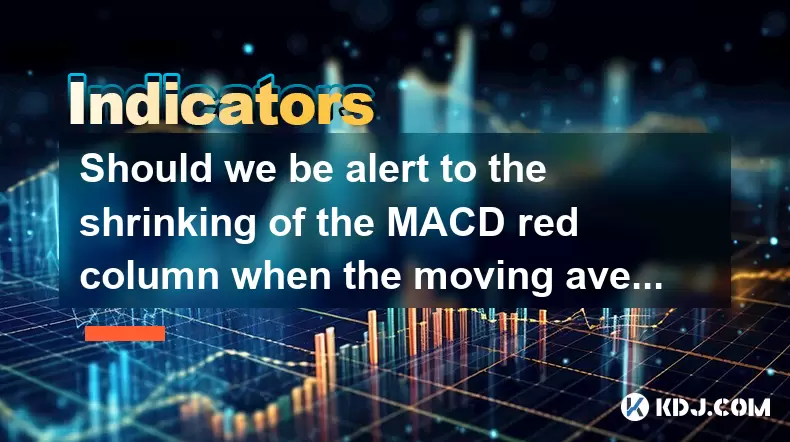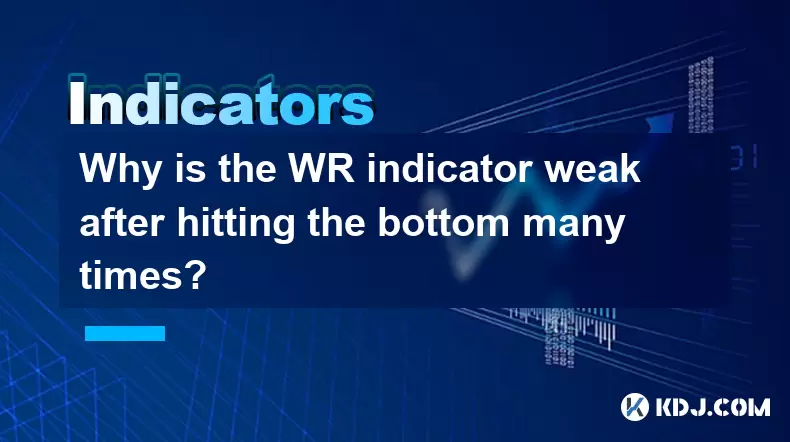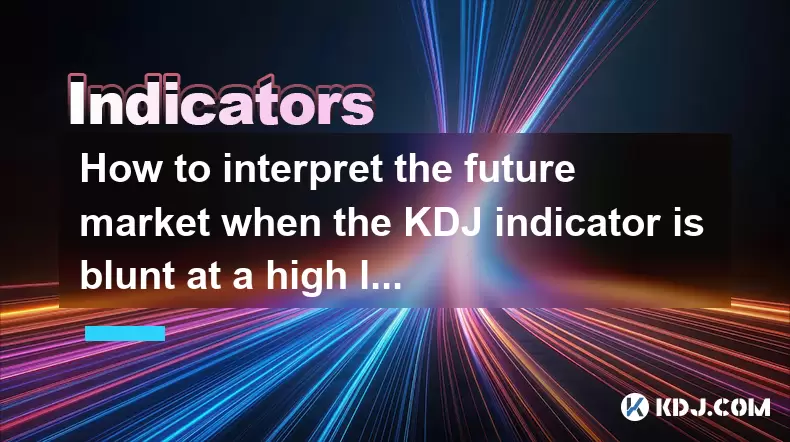-
 Bitcoin
Bitcoin $101,898.5005
-0.75% -
 Ethereum
Ethereum $2,258.1125
-1.07% -
 Tether USDt
Tether USDt $1.0004
0.01% -
 XRP
XRP $2.0178
-2.93% -
 BNB
BNB $624.0243
-1.53% -
 Solana
Solana $134.3298
-0.90% -
 USDC
USDC $0.9999
0.01% -
 TRON
TRON $0.2675
-2.05% -
 Dogecoin
Dogecoin $0.1538
-1.96% -
 Cardano
Cardano $0.5482
-1.11% -
 Hyperliquid
Hyperliquid $35.5636
5.45% -
 Bitcoin Cash
Bitcoin Cash $453.4902
-1.66% -
 Sui
Sui $2.5134
-2.97% -
 UNUS SED LEO
UNUS SED LEO $9.1292
1.77% -
 Chainlink
Chainlink $11.8457
-1.60% -
 Stellar
Stellar $0.2312
-2.73% -
 Avalanche
Avalanche $16.9721
0.29% -
 Toncoin
Toncoin $2.7549
-3.82% -
 Shiba Inu
Shiba Inu $0.0...01081
-1.10% -
 Litecoin
Litecoin $80.8250
-0.71% -
 Hedera
Hedera $0.1374
0.21% -
 Monero
Monero $305.4827
-2.36% -
 Ethena USDe
Ethena USDe $1.0006
0.00% -
 Dai
Dai $1.0000
-0.01% -
 Polkadot
Polkadot $3.2085
-3.12% -
 Bitget Token
Bitget Token $4.0845
-3.13% -
 Uniswap
Uniswap $6.3353
-1.63% -
 Pi
Pi $0.5085
-0.70% -
 Pepe
Pepe $0.0...08913
-3.82% -
 Aave
Aave $232.7090
-0.58%
How to use the AVL indicator in a 30-minute cycle? Do the daily level parameters need to be adjusted?
The AVL indicator, when set to a 30-minute cycle, helps traders spot short-term market trends and potential reversals by analyzing volume dynamics.
May 23, 2025 at 03:35 am

The Average Volume Line (AVL) indicator is a powerful tool used by cryptocurrency traders to gauge market momentum and potential trend reversals. When applied to a 30-minute cycle, the AVL indicator can provide valuable insights into short-term market movements. This article will delve into how to use the AVL indicator in a 30-minute cycle and whether daily level parameters need to be adjusted for optimal results.
Understanding the AVL Indicator
The AVL indicator calculates the average volume over a specified period, typically used to identify the strength of a trend. In the context of a 30-minute cycle, the AVL helps traders understand the volume dynamics within a shorter timeframe. This can be particularly useful for day traders who need to make quick decisions based on rapid market changes.
The AVL is calculated by taking the average of the volume over a set number of periods. For instance, if you are using a 14-period AVL, it will calculate the average volume of the last 14 periods. This average is then plotted on the chart, allowing traders to compare current volume levels against the average.
Setting Up the AVL Indicator in a 30-Minute Cycle
To effectively use the AVL indicator in a 30-minute cycle, follow these steps:
- Select the 30-minute timeframe: On your trading platform, switch to a 30-minute chart. This will ensure that you are viewing the market in the desired cycle.
- Add the AVL indicator: Navigate to your platform's indicator menu and select the AVL indicator. If it's not a default indicator, you may need to download it from a third-party source.
- Configure the AVL settings: Set the period for the AVL. For a 30-minute cycle, a common setting is a 14-period AVL, but you may need to experiment to find what works best for your trading strategy.
- Analyze the AVL line: Once the AVL line is plotted on your chart, you can start analyzing it in conjunction with price movements. Look for divergences between the price and the AVL line, as these can signal potential trend reversals.
Interpreting the AVL Indicator in a 30-Minute Cycle
When using the AVL indicator in a 30-minute cycle, there are several key points to consider:
- Volume spikes: If the current volume significantly exceeds the AVL line, it could indicate strong buying or selling pressure. This can be a signal to enter or exit a trade.
- Volume trends: Consistent volume above or below the AVL line can indicate the strength of the current trend. A trend with volume consistently above the AVL line is considered strong, while a trend with volume below the AVL line may be weakening.
- Divergences: If the price is making new highs or lows, but the volume is not following suit (i.e., it's below the AVL line), this could signal a potential reversal. Conversely, if the price is stagnant but volume is increasing above the AVL line, it may indicate an impending breakout.
Adjusting Daily Level Parameters for the 30-Minute Cycle
When transitioning from daily level parameters to a 30-minute cycle, adjustments may be necessary to ensure the AVL indicator remains effective. Here are some considerations:
- Period adjustment: The period setting for the AVL indicator may need to be shortened when moving to a 30-minute cycle. A period that works well on a daily chart may be too long for a 30-minute chart, as it could smooth out important short-term volume fluctuations.
- Sensitivity: A shorter period will make the AVL indicator more sensitive to volume changes, which can be beneficial in a 30-minute cycle where quick reactions are crucial. However, be aware that increased sensitivity can also lead to more false signals.
- Testing and optimization: It's essential to test different period settings on historical data to find the optimal configuration for your 30-minute cycle trading strategy. This may involve backtesting various period lengths to see which one provides the most reliable signals.
Practical Example of Using the AVL Indicator in a 30-Minute Cycle
To illustrate how to use the AVL indicator in a 30-minute cycle, consider the following example:
- Scenario: You are trading Bitcoin on a 30-minute chart. You have set the AVL indicator to a 14-period setting.
- Observation: You notice that the price of Bitcoin is making higher highs, but the volume is consistently below the AVL line.
- Interpretation: This divergence suggests that the upward price movement may not be supported by strong buying volume, indicating a potential reversal.
- Action: Based on this observation, you decide to place a sell order, anticipating a price drop.
Common Pitfalls and How to Avoid Them
When using the AVL indicator in a 30-minute cycle, there are several common pitfalls to be aware of:
- Over-reliance on the indicator: While the AVL indicator can provide valuable insights, it should not be used in isolation. Always combine it with other technical analysis tools and fundamental analysis to make well-informed trading decisions.
- Ignoring market context: The effectiveness of the AVL indicator can vary depending on market conditions. In highly volatile markets, volume spikes may be more common, which could lead to false signals.
- Failing to adjust settings: As mentioned earlier, the period setting of the AVL indicator may need to be adjusted when moving between different timeframes. Failing to do so can result in suboptimal performance.
Frequently Asked Questions
Q: Can the AVL indicator be used effectively on other timeframes besides the 30-minute cycle?
A: Yes, the AVL indicator can be used on various timeframes, including 1-minute, 5-minute, 1-hour, and daily charts. The key is to adjust the period setting to suit the specific timeframe you are trading on. For shorter timeframes, a shorter period may be more appropriate, while longer timeframes may benefit from a longer period setting.
Q: Is the AVL indicator suitable for all types of cryptocurrency trading strategies?
A: The AVL indicator is versatile and can be used in various trading strategies, including trend following, mean reversion, and breakout trading. However, it is most effective when combined with other indicators and analysis methods to confirm signals and reduce the likelihood of false positives.
Q: How can I determine the optimal period setting for the AVL indicator in a 30-minute cycle?
A: Determining the optimal period setting involves backtesting different settings on historical data. Start with a commonly used setting like 14 periods and then experiment with shorter and longer periods to see which one provides the most reliable signals for your specific trading strategy.
Q: Are there any other indicators that complement the AVL indicator in a 30-minute cycle?
A: Yes, several indicators can complement the AVL indicator in a 30-minute cycle. The Relative Strength Index (RSI) can help identify overbought or oversold conditions, while moving averages can provide additional trend confirmation. Combining these indicators can enhance your overall trading strategy.
Disclaimer:info@kdj.com
The information provided is not trading advice. kdj.com does not assume any responsibility for any investments made based on the information provided in this article. Cryptocurrencies are highly volatile and it is highly recommended that you invest with caution after thorough research!
If you believe that the content used on this website infringes your copyright, please contact us immediately (info@kdj.com) and we will delete it promptly.
- FUNToken: Decoding Past Trends and Getting Started in the Gaming Crypto Sphere
- 2025-06-23 22:25:12
- BTC Price Analysis: Navigating Volatility and the Quest for a New ATH
- 2025-06-23 22:25:12
- Genesis, Bitcoin Mining, and Air-Cooled Miners: A New Era?
- 2025-06-23 22:45:12
- Coinbase's Growth and Resilience: Navigating the Crypto Landscape
- 2025-06-23 22:45:12
- Bitcoin Options Market: Bullish Bets Amidst Geopolitical Jitters
- 2025-06-23 22:51:52
- Dubai's Virtual Asset Scene Heats Up: GAP 3 Partners Lands Landmark Investment Advisor License
- 2025-06-23 22:55:12
Related knowledge

What is the significance of the gap formed by the gap opening not being filled within five days?
Jun 23,2025 at 09:42pm
Understanding Gaps in Cryptocurrency TradingIn the world of cryptocurrency trading, a gap refers to a situation where the price of an asset jumps from one level to another without any trading activity occurring between those two levels. This often happens over weekends or holidays when the market is closed, and significant news or events occur that impa...

Does the second golden cross of MACD above the zero axis represent the continuation of strength?
Jun 23,2025 at 08:21pm
Understanding the MACD IndicatorThe Moving Average Convergence Divergence (MACD) is a widely used technical analysis tool in cryptocurrency trading. It consists of three main components: the MACD line, the signal line, and the histogram. The MACD line is calculated by subtracting the 26-period Exponential Moving Average (EMA) from the 12-period EMA. The...

Is it effective when the DIF line suddenly crosses the zero axis when the volume is shrinking and the market is trading sideways?
Jun 23,2025 at 07:29pm
Understanding the DIF Line in Technical AnalysisThe DIF line, or the Difference Line, is a critical component of the MACD (Moving Average Convergence Divergence) indicator, widely used in technical analysis across cryptocurrency and traditional financial markets. It represents the difference between the 12-period EMA (Exponential Moving Average) and the...

Should we be alert to the shrinking of the MACD red column when the moving average is arranged in a bullish pattern?
Jun 23,2025 at 08:14pm
Understanding the MACD Red Column and Its SignificanceThe Moving Average Convergence Divergence (MACD) is a widely used technical indicator in cryptocurrency trading. It consists of three main components: the MACD line, the signal line, and the MACD histogram (the red column). The red column represents the difference between the MACD line and the signal...

Why is the WR indicator weak after hitting the bottom many times?
Jun 23,2025 at 07:56pm
Understanding the WR Indicator in Cryptocurrency TradingThe Williams %R (WR) indicator is a momentum oscillator used by traders to identify overbought and oversold levels in the market. It ranges from 0 to -100, with readings above -20 considered overbought and below -80 considered oversold. In the context of cryptocurrency trading, where volatility is ...

How to interpret the future market when the KDJ indicator is blunt at a high level for a long time?
Jun 23,2025 at 10:35pm
Understanding the KDJ Indicator in Cryptocurrency TradingThe KDJ indicator, also known as the stochastic oscillator, is a momentum-based technical analysis tool used to identify overbought and oversold conditions in financial markets. It consists of three lines: the %K line (fast stochastic), the %D line (slow stochastic), and the J line (divergence). I...

What is the significance of the gap formed by the gap opening not being filled within five days?
Jun 23,2025 at 09:42pm
Understanding Gaps in Cryptocurrency TradingIn the world of cryptocurrency trading, a gap refers to a situation where the price of an asset jumps from one level to another without any trading activity occurring between those two levels. This often happens over weekends or holidays when the market is closed, and significant news or events occur that impa...

Does the second golden cross of MACD above the zero axis represent the continuation of strength?
Jun 23,2025 at 08:21pm
Understanding the MACD IndicatorThe Moving Average Convergence Divergence (MACD) is a widely used technical analysis tool in cryptocurrency trading. It consists of three main components: the MACD line, the signal line, and the histogram. The MACD line is calculated by subtracting the 26-period Exponential Moving Average (EMA) from the 12-period EMA. The...

Is it effective when the DIF line suddenly crosses the zero axis when the volume is shrinking and the market is trading sideways?
Jun 23,2025 at 07:29pm
Understanding the DIF Line in Technical AnalysisThe DIF line, or the Difference Line, is a critical component of the MACD (Moving Average Convergence Divergence) indicator, widely used in technical analysis across cryptocurrency and traditional financial markets. It represents the difference between the 12-period EMA (Exponential Moving Average) and the...

Should we be alert to the shrinking of the MACD red column when the moving average is arranged in a bullish pattern?
Jun 23,2025 at 08:14pm
Understanding the MACD Red Column and Its SignificanceThe Moving Average Convergence Divergence (MACD) is a widely used technical indicator in cryptocurrency trading. It consists of three main components: the MACD line, the signal line, and the MACD histogram (the red column). The red column represents the difference between the MACD line and the signal...

Why is the WR indicator weak after hitting the bottom many times?
Jun 23,2025 at 07:56pm
Understanding the WR Indicator in Cryptocurrency TradingThe Williams %R (WR) indicator is a momentum oscillator used by traders to identify overbought and oversold levels in the market. It ranges from 0 to -100, with readings above -20 considered overbought and below -80 considered oversold. In the context of cryptocurrency trading, where volatility is ...

How to interpret the future market when the KDJ indicator is blunt at a high level for a long time?
Jun 23,2025 at 10:35pm
Understanding the KDJ Indicator in Cryptocurrency TradingThe KDJ indicator, also known as the stochastic oscillator, is a momentum-based technical analysis tool used to identify overbought and oversold conditions in financial markets. It consists of three lines: the %K line (fast stochastic), the %D line (slow stochastic), and the J line (divergence). I...
See all articles
























































































